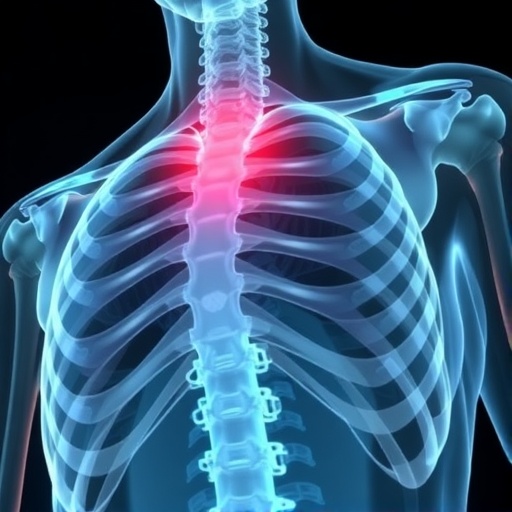Circulation: Cardiovascular Quality and Outcomes journal report
DALLAS, March 12, 2019 – Out-of-hospital cardiac arrest was the third leading cause of “health loss due to disease” in the United States behind ischemic heart disease and low back/neck pain in 2016, according to new research in Circulation: Cardiovascular Quality and Outcomes, an American Heart Association journal.
This groundbreaking study is the first to estimate disability-adjusted life years (DALY) – which measures the sum of years of life lost prematurely and years lived with disability due to a disease – among those who experienced non-traumatic out-of-hospital cardiac arrest in the United States.
Cardiac arrest is an abrupt loss of the heart’s ability to pump, which leads to death within minutes if not treated. Its effect on years lost to premature death and disability is currently unknown.
Using the national Cardiac Arrest Registry to Enhance Survival (CARES) database, researchers examined 59,752 cases of adult, non-traumatic, Emergency Medical Services (EMS)-treated out-of-hospital cardiac arrest from 2016.
Researchers found:
- Disability-adjusted life year rates for out-of-hospital cardiac arrest were 1,347 per 100,000 individuals, ranking it as the third leading cause of health loss due to disease in the United States behind ischemic heart disease (2,447) and low back and neck pain (1,565);
- Individuals who experienced out-of-hospital cardiac arrest lost an average of 20.1 healthy years; and
- At the national level, this resulted in 4.3 million healthy life years lost, representing 4.5 percent of total DALY in the country.
Researchers also measured the effects of bystander intervention – CPR and automated external defibrillator (AED) application – on the disease burden of out-of-hospital cardiac arrest. Focusing their analysis on a subpopulation of bystander-witnessed out-of-hospital cardiac arrest events, researchers found that on a national level:
- Survival to hospital discharge was higher for those who received bystander CPR than for those who did not (21.5 percent vs. 12.9 percent);
- Bystander CPR alone was associated with 25,317 healthy life years saved; and
- CPR paired with AED defibrillation was associated with 35,407 healthy life years saved.
Researchers noted that women tended to have higher DALY values than men, as well as Caucasians compared to African Americans. Additionally, Hispanic race was associated with higher DALY compared with Caucasians.
“Many cardiac arrests occur outside of the hospital, and our results show that bystander interventions reduce death and disability, underscoring the importance of bystander CPR and AED education, as well as national cardiac arrest surveillance,” said Ryan A. Coute, D.O., lead study author and Emergency Medicine resident at the University of Alabama at Birmingham.
Researchers hope that this study may help focus public health policies, resources and future research on resuscitation science.
“Cardiac arrest is unique because survival is dependent on the timely response of bystanders, medical dispatch, EMS personnel, physicians and hospital staff,” Coute said. “We hope that the results of our study provide an opportunity to emphasize the fact that ‘cardiac arrest’ and ‘heart attack’ are not synonymous. Our results may also help inform funding agencies and policy makers regarding how to best utilize limited resources to improve public health.”
###
Co-authors are Brian H. Nathanson, Ph.D., Ashish Panchal, M.D., Ph.D., Michael C. Kurz, M.D., Nathan L. Haas, M.D., Bryan McNally, M.D., Robert W. Neumar, M.D., Ph.D. and Timothy J. Mader, M.D. Author disclosures are on the manuscript.
Researchers reported no source of funding and author disclosures are detailed in the manuscript. CARES receives funding from the American Red Cross and the American Heart Association.
Additional Resources:
Available multimedia is on right column of release link – https:/
After March 12, 2019, view the manuscript and an AHA commentary online.
Cardiac Arrest vs. Heart Attack infographic
Emergency Treatment of Cardiac Arrest
Hands-Only CPR
Follow AHA/ASA news on Twitter @HeartNews
Statements and conclusions of study authors published in American Heart Association scientific journals are solely those of the study authors and do not necessarily reflect the association’s policy or position. The association makes no representation or guarantee as to their accuracy or reliability. The association receives funding primarily from individuals; foundations and corporations (including pharmaceutical, device manufacturers and other companies) also make donations and fund specific association programs and events. The association has strict policies to prevent these relationships from influencing the science content. Revenues from pharmaceutical and device corporations and health insurance providers are available at https:/
About the American Heart Association
The American Heart Association is a leading force for a world of longer, healthier lives. With nearly a century of lifesaving work, the Dallas-based association is dedicated to ensuring equitable health for all. We are a trustworthy source empowering people to improve their heart health, brain health and well-being. We collaborate with numerous organizations and millions of volunteers to fund innovative research, advocate for stronger public health policies, and share lifesaving resources and information. Connect with us on heart.org, Facebook, Twitter or by calling 1-800-AHA-USA1.
Media Contact
Bridgette McNeill
[email protected]
https:/



